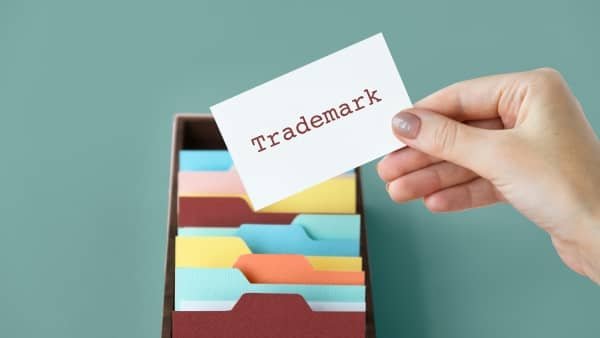What is the Objection for Trademark Registration?
Objections to trademark registration often arise due to similarity with existing trademarks, detailed, generic terms, or offensive content. Responding promptly and professionally is important. Analyze the objection carefully, gather evidence supporting the distinctiveness of your trademark, and consider amending it if necessary. Negotiate with objecting parties and seek legal advice if needed. If the objection continues, explore options for appeal. Regularly monitor the trademark status for updates. Addressing objections effectively increases the chances of successful registration and protection of valuable intellectual property assets.
Types of Trademark Objection
- Using the wrong trademark form can result in an objection to the application. Form TM 16 can be filed to correct the application and address the objection.
- Incorrect trademark name on the application may lead to an objection. Filing Form TM 16 allows for correction of the applicant’s name on the application.
- Failure to file Trademark Form TM-48 by the trademark attorney or agent can result in an objection. Form TM-16 can be used to correct any filing errors.
- If the applicant provides an incorrect address on the trademark application, it may lead to an objection. Form TM-16 can be utilized to rectify the address information.
- A vague specification of products and services in the application can result in an objection.
- The existence of similar trademarks can lead to an objection.
- If a trademark lacks distinguishing characteristics to differentiate products, it can be objected.
- Misleading trademarks may lead to objection based on public perception.
Best Reply for Trademark Registration Objection
- File a counter-statement within 2 months from the objection date to avoid application rejection.
- Registrar calls for a hearing post-counter-statement submission ruling in favor results in registration.
- Unfavorable ruling allows applicant 3 months to appeal to the Intellectual Property Appellate Board (IPAB).
- Late appeals require condonation of delay and Rs. 2500 fine as per Trademark rules.
- Applicant ensures thorough documentation verification.
- Deputy registrar endorses the application; correct submissions receive serial numbers.
- Hearing location determined upon case registration.
- IPAB considers both parties’ applications, absence may lead to ex-parte rulings
- 30-day window for counter-petition after IPAB dismissal or ex-parte ruling.
- Dissatisfied applicants may appeal to the High Court for further review.
Benefits of Overcoming Trademark Objections
There are various benefits of trademark objections like legal protection, exclusive rights, enforceable rights, and many more. They are explained below:
1. Legal Protection
Trademark registration offers essential legal protection by preventing others from using similar marks for similar goods or services, reducing the risk of brand identity theft or confusion in the marketplace.
2. Exclusive Rights
Registration provides exclusive rights to use the mark nationwide, ensuring that your brand’s identity remains unique and protected against unauthorized use by competitors.
3. Enforceable Rights
Registered trademarks have stronger enforceable rights, enabling legal action against infringers if necessary, thus safeguarding your brand’s integrity and market presence.
4. Brand Recognition
A registered trademark serves as a powerful tool for enhancing brand recognition and consumer trust by distinguishing your goods or services from competitors, thereby reinforcing your brand’s credibility and reputation in the market.
5. Asset Value
Registering your trademark adds significant value to your business as a valuable asset, potentially attracting investors or buyers who recognize the strength and exclusivity of your brand’s identity and market position.
6. Global Expansion
Some trademark registration systems offer international protection, facilitating global expansion opportunities by ensuring consistent brand identity and protection across various markets, thereby supporting your business’s growth and success on a global scale
Disadvantages of Trademark Registration Objection
There are various disadvantages of trademark registration objection like cost burden, time constraints, risk of rejection and many more. They are explained below:
1. Cost Burden
The expenses associated with trademark registration, including application fees and legal consultations, can pose a financial strain, particularly for small businesses and individuals with limited resources.
2. Time Constraints
The trademark registration process often involves lengthy waiting periods, delaying the ability to fully utilize and protect the trademark in business operations and marketing strategies.
3. Risk of Rejection
There’s a possibility of the trademark application being rejected by the trademark office due to various factors such as similarity to existing trademarks, lack of distinctiveness, or failure to meet legal requirements, leading to wasted time and resources.
4. Legal Expertise Requirement
Navigating trademark law and the registration process can be complex, necessitating the involvement of legal experts or trademark attorneys, which adds to the overall cost and may be challenging for individuals or small businesses to afford.
5. Limited Protection Scope
Trademark registration offers protection only within specific jurisdictions or classes of goods and services, leaving gaps in protection that may be exploited by competitors, especially in global markets.
6. Ongoing Maintenance Obligations
After registration, trademark owners are responsible for fulfilling maintenance requirements such as renewals and demonstrating continued use, which requires ongoing attention and may incur additional costs and administrative burdens.
Documents required for Trademark Registration
1. Authorization – TM-48: This document formally grants permission for specific actions related to the trademark application or registration process.
2. Examination Report of Trademark/Application Number: This report from the trademark office provides details about the examination results of your trademark application, including the application number, status, and any required actions.
3. ID Proof: A valid identification document, such as a driver’s license or passport, is required to establish the identity of the individual or entity associated with the trademark application.
4. Address Proof: Documentation confirming the address of the individual or entity filing the trademark application, commonly provided through utility bills, lease agreements, or official government documents.
5. Affidavit of Usage: A sworn statement or written declaration confirming the actual usage of the trademark in commerce, providing evidence that the trademark is actively used in connection with specified goods or services.
6. Supporting Evidence of Trademark in Commercial Use: Documentation demonstrating the commercial use of the trademark, such as invoices, product packaging, or advertising materials, is required to prove that the trademark is actively used in the marketplace.
Steps Required for Trademark Registration
- Understanding Trademark Objections
- Writing a Reply to Trademark Objections
- Trademark Meeting
- Posting in Trademark Journal
- Getting Trademark Registered




